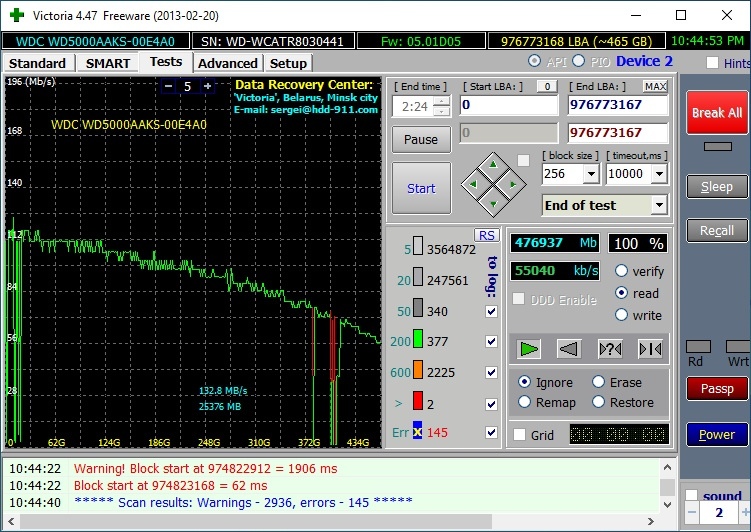Answer the question
In order to leave comments, you need to log in
Why MHDD and Victoria HDD produce different results?
Please tell me why when testing HDD using Victoria and MHDD, the results are different? Moreover, Victoria shows that the disk is in the worst condition, there are more slow sectors, more bad blocks. I read that it is preferable to use MHDD, that it gives a more accurate result. Maybe someone knows if Victoria gives a false result, and which software is preferable to align the disk?
PS It is clear that according to the results of both tests, the disk has clearly outlived its usefulness, which is also sometimes indicated by the sound during its operation (like a fork on a plate), but still the question of the results of both tests is of interest.

Answer the question
In order to leave comments, you need to log in
because you are testing with an old version of victoria; relevant, IMHO, shows quite plausible results
The latest version is 4.73b SSD dated April 22, 2019.
Both programs are infinitely obsolete and do not support modern technologies for accessing hard drives.
You can only trust diagnostics by SMART
PS:
If the number of bads in the available area is more than 0 (relocated is not considered) - get ready to throw out the hard drive.
It can fail at any moment.
In my opinion, Victoria 3.5 for DOS is the best program. Loads quickly, works out most accurately. You just need to have a system unit with a motherboard that supports IDE mode and test disks on it. It doesn't matter what file structure. The main thing is that it fixes the sectors. The only negative is laptops, in which, in order to remove the hard drive, you need to disassemble everything. It's good if bios supports IDE mode. And if not, then sadness. The author of the program recommends deleting the MBR and then restoring it (for the Windows version). But after such a GPT, the disk stopped loading. It's not always safe.
Didn't find what you were looking for?
Ask your questionAsk a Question
731 491 924 answers to any question